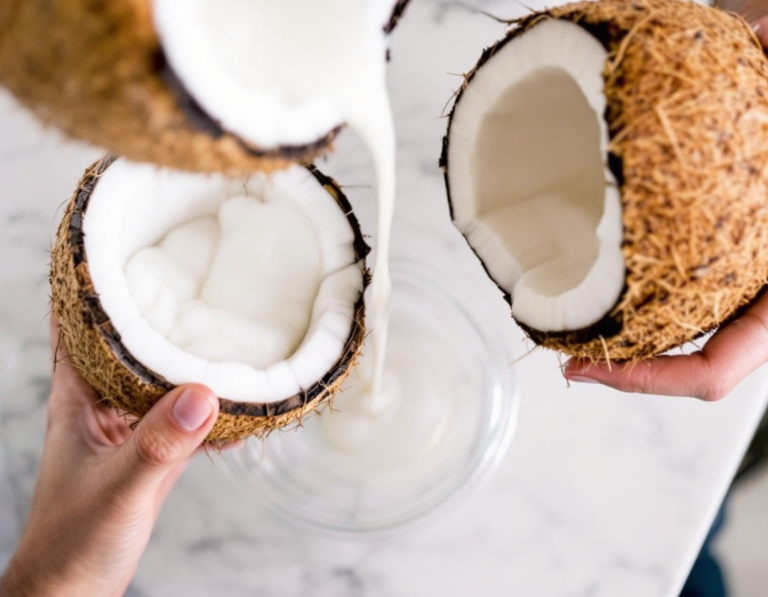
Coconut flour is like the quirky cousin in the gluten-free baking family—sometimes misunderstood but oh-so-versatile when given the chance. I remember the first time I tried using it; the kitchen was a floury mess, but the aroma was heavenly. Now, it’s my go-to for whipping up dinners that feel like a tropical escape—think zesty lime chicken and fluffy coconut pancakes.
Steps
- Create an opening in the coconut and drain out the juice. Remove the hard outer shell and chop the coconut flesh into small pieces.
- Place the chopped coconut into a blender, add boiling water, and blend for 1-2 minutes until the mixture is mostly smooth with no large chunks.
- Allow the blended mixture to sit for about 5 minutes to cool down, then strain it through a cheesecloth, squeezing out any excess liquid.
- Preheat your oven to 80°C (170°F) and line a large baking sheet with parchment paper.
- Spread the dry coconut pulp evenly on the prepared baking sheet and bake for 40-45 minutes until it’s completely dry.
- Once dried, remove the coconut pulp from the oven and blend it again for 1-2 minutes until it reaches a flour-like consistency.
- Store the homemade coconut flour in an airtight container at room temperature, shaking gently before use to prevent clumping.

Ingredients
- 1 large coconut
- 4 cups boiling water
FAQ
- Can I replace regular flour with coconut flour in recipes?
- It depends on the recipe. Coconut flour absorbs more moisture than regular flour, so you can’t swap them equally. Typically, ¼ cup of coconut flour can replace 1 cup of all-purpose flour, but it’s best to follow recipes specifically designed for coconut flour.
- Does coconut flour taste like coconut?
- Surprisingly, no. Despite being made from coconuts, coconut flour doesn’t impart a coconut flavor to baked goods, making it versatile for various recipes.
- What are the benefits of using coconut flour in baking?
- Coconut flour is high in protein and fiber while being low in carbohydrates, making it an excellent option for gluten-free and keto diets. Additionally, it gives baked goods a tender, cake-like texture.
- How should coconut flour be stored?
- Store coconut flour in an airtight container at room temperature for up to six months. Shake it gently before use to prevent clumping.
- What types of recipes work best with coconut flour?
- Coconut flour is perfect for a range of recipes, including pancakes, muffins, bread, and cookies. It also works well in no-bake desserts and keto-friendly dishes.
Tips
- Adjust Liquid Ratios: When substituting coconut flour for regular flour, remember that it absorbs significantly more moisture. Use ¼ cup of coconut flour for every 1 cup of all-purpose flour, and be ready to increase the amount of liquid in your recipe to ensure the final product isn’t too dry.
- Incorporate Eggs: Coconut flour tends to be denser, so adding extra eggs can help provide structure and moisture to your baked goods. This will ensure they are fluffy rather than crumbly.
- Sift the Flour: Before using, sift coconut flour to break up any clumps. This will help incorporate it more evenly into your mixture and avoid any lumps in the final product.
- Store Properly: Keep your coconut flour in an airtight container at room temperature to maintain its freshness for up to six months. Shake it gently before each use to prevent clumping.
Equipment
- Blender – Needed for blending coconut meat into a smooth pulp and later into a flour-like consistency.
- Cheesecloth – Used for straining the coconut mixture to remove excess liquid.
- Baking sheet – Required for spreading the coconut pulp to dry in the oven.
- Parchment paper – Used to line the baking sheet.
- Airtight container – For storing the homemade coconut flour to keep it fresh and clump-free.
